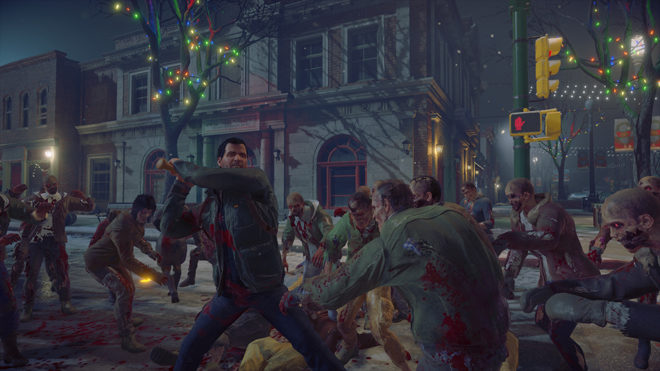Examples of Damage Control in Gaming: Dead Rising Came Back Wrong

The original Dead Rising was an unlikely success despite its mainstream-friendly façade. From its appearance, Capcom was following the ever-popular zombie killing trend, one that feels like it will never cease being profitable for any entertainment genre until the end of time. But its approach was unique for zombie-based titles at that time, and stands out to this day — especially since it was remastered for current platforms.
It starred Frank West, a photojournalist who had to survive a zombie uprising within a mall for 72 hours, before a helicopter could pick him up. But in that time, the player was given missions to complete before the in-game timer expired. The player would obtain one of six endings depending on how many missions they could complete in that time. The race against the clock made its pacing and style unique compared to other comparatively generic zombie games, and it resonated with a sizable audience.
Of course, the amount of Japanese-style quirkiness and unique sense of humor helped with its appeal for some audiences. It’s tough to remotely dislike a game that let players create around 44 different juices in a mixer using various recipes or let them wear a mask based on a Servbot from Mega Man Legends, even though constantly being timed wasn’t to everyone’s liking.

But the franchise started drifting from its unique nature over time. Dead Rising 2 contained a more forgiving timer, but the Frank West-starring Off the Record version provided the option to play without it. Following that, they started doing away with the timer altogether, with Dead Rising 3 taking the open world approach (though some missions were still timed). Changes were expected to happen with the series given the shift in development team, as every title following the first one has been handled by Capcom Vancouver, formerly known as Blue Castle Games before Capcom purchased them. But while some fans didn’t like the alterations being made, others didn’t mind them.
Recent evidence, however, suggests Capcom may have underestimated the number of Dead Rising fans who liked the older titles in order to chase a phantom audience. While the previous sequels made compromises by keeping elements that made the franchise appealing while simplifying other aspects to attract a larger player base, Dead Rising 4 veered too far in the latter direction. The panic started when the first gameplay videos emerged at E3 2016, where some made it resemble a Dynasty Warriors-style game with zombies, with some quirky Dead Rising humor on the side. But that wasn’t enough to draw any conclusions.
Yet that impression didn’t change with the final product, where it showed that Capcom was gunning for the larger crowd that buys open world games by the dozens instead of the smaller one they already had. Its sales may not have been too good either, given how it didn’t make the top ten in the month it released, and how no press release was disseminated touting its success.
This prompted Capcom to discuss it in their third-quarter financial results conference call, where they admitted that creating a game for a wider audience led to a wider range of opinions. This highlighted how polarizing the title was in terms of reviews from critics and especially the audience. Take a look at the Metacritic aggregates from both to see the divide, and how the user reviews skew negative. While some of the latter are too reactionary to be useful, others went into detail about why it didn’t appeal to them as fans of previous games. Its sales also suggest that not enough consumers in the wider audience they wanted to chase were interested in giving it a shot, despite its advertising campaign.

The fact that protagonist Frank West’s old voice actor, Terence J. Rotolo, didn’t return also irked a lot of people. That came alongside changes to West’s character, where he turned into a poor man’s version of the Evil Dead franchise’s Ash Williams. That makes you wonder why they didn’t just make another new protagonist instead. Its reception was harmed even further by the game’s true ending being locked behind the paid “Frank Rising” DLC (Note: There are spoilers on the page).
It’s possible they won’t give up on the franchise just yet, but it’s tough to consider where Capcom can go from here. Most AAA games these days tend to be massive open world titles, but they realize this didn’t work out for Dead Rising 4, and may not try it again. But making a game like the old titles and selling it for $60 in the near future might be tough. I say “might” because perhaps taking the Resident Evil 7-style approach of considerably lowering development costs and selling a title that shows they’ve learned some harsh lessons could be a good idea after all.
It’s not over yet for Dead Rising 4, as its second chance will arrive when the Steam version releases on March 14th. It may not sell enough to save the game, but it could reach a large enough audience for Capcom to deem it a moderate success. They should still take the criticism into consideration for the next installment, though.





